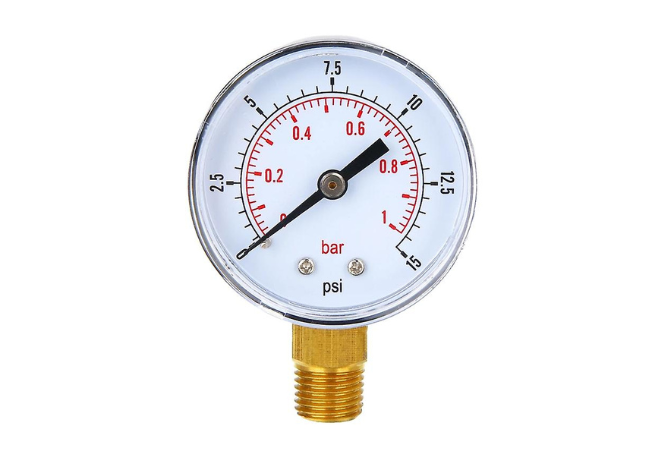What Are Deburring Tools and Why Are They Essential in Precision Manufacturing?
Deburring tools are indispensable instruments in various industries, especially where precision, safety, and quality are non-negotiable. Whether you're manufacturing metal parts, assembling plastic components, or working on woodworking projects, burrs—those unwanted rough edges or protrusions—can compromise the integrity and functionality of a part. That’s where deburring tools come in. These tools help smooth out the rough edges, enhance finish quality, and ensure that each component meets the highest standards.
Understanding the purpose, types, and applications of deburring tools can empower industries to boost productivity, maintain product quality, and comply with safety regulations.
Why Is Deburring Important in Industrial Applications?
Deburring may seem like a minor finishing step, but it plays a pivotal role in maintaining part performance and operational safety. Burrs can result from drilling, milling, grinding, turning, or cutting. These sharp, unwanted fragments can:
- Cause injury to operators handling unfinished parts
- Interfere with precise fits and tolerances
- Lead to increased wear and tear in moving assemblies
- Introduce points of failure in electrical or hydraulic components
- Reduce aesthetic value of consumer-facing products
By incorporating the right deburring tools, manufacturers can enhance reliability, product longevity, and customer satisfaction.
How Do Deburring Tools Work?
Deburring tools work by cutting, scraping, sanding, or grinding off burrs from the surface of a material. The method used depends on the tool type, material composition, and the complexity of the part. Manual tools are ideal for small batch work or intricate parts, while automated solutions are used for large-scale production.
What Are the Different Types of Deburring Tools?
Choosing the right deburring tool depends on the material and the type of burr that needs to be removed. Some of the most commonly used deburring tools include:
Hand Deburring Tools
- Used for precision removal of burrs on small parts
- Feature ergonomic handles for easy control and extended use
- Suitable for soft metals, plastics, and composites
Rotary Burrs
- Attached to power tools for aggressive material removal
- Available in various shapes such as cylindrical, spherical, or conical
- Designed for metals, stone, and hard plastics
Deburring Blades
- Replaceable components of manual or automatic tools
- Offer precision scraping and trimming
- Often made from high-speed steel or carbide for durability
Abrasive Deburring Wheels
- Used in grinding machines and bench grinders
- Ideal for removing burrs from large surfaces
- Commonly used on sheet metal, aluminium, and stainless steel
Countersink Deburring Tools
- Remove burrs from drilled holes
- Ensure smooth edges for screw and bolt applications
- Enhance both aesthetic and mechanical integrity
Tumbling Machines
- Provide mass deburring through vibration or centrifugal motion
- Work with media such as ceramic chips or polishing stones
- Used for high-volume production of small parts
Thermal Deburring Machines
- Utilise combustible gases to burn off burrs in hard-to-reach areas
- Ideal for hydraulic components and fuel injection parts
- Deliver precise and uniform results
Where Are Deburring Tools Commonly Used?
Deburring tools find application in a wide range of industries that demand high-quality finishes and operational safety. Key sectors include:
Automotive Industry
- Engine components, transmission parts, and suspension systems
- Ensures proper assembly, fit, and function
- Reduces vibration and wear
Aerospace Industry
- Aircraft fuselage panels, turbine blades, and hydraulic systems
- Meets strict tolerances and aerodynamic standards
- Prevents fatigue and stress concentrations
Electronics and PCB Manufacturing
- Circuit boards and electrical connectors
- Prevents shorts and conductivity issues
- Maintains the precision of micro-components
Medical Device Manufacturing
- Surgical instruments, prosthetics, and diagnostic equipment
- Enhances hygiene and usability
- Eliminates sharp edges that may harm users
Metal Fabrication and Machining
- Sheet metal parts, enclosures, and structural frames
- Improves welding and surface finishing
- Prepares parts for coating or painting
What Are the Key Benefits of Using Deburring Tools?
Investing in quality deburring tools brings measurable returns in product quality, operational efficiency, and end-user satisfaction.
- Improves surface quality for painting, coating, or bonding
- Reduces machine wear by preventing burr buildup in assembly lines
- Enhances workplace safety by eliminating sharp edges
- Boosts productivity through faster finishing processes
- Maintains dimensional accuracy and tight tolerances
- Minimises rework and material waste
How to Select the Right Deburring Tool?
Selecting the ideal deburring tool involves evaluating the part geometry, material type, production volume, and surface finish requirement.
- For small-scale manual work, opt for hand deburring tools with interchangeable blades
- Use rotary burrs or abrasive wheels for aggressive removal on hard materials
- Apply tumbling or thermal deburring methods for batch processing or intricate components
- Choose countersink tools when working with drilled holes that require screw or bolt placements
What Are the Latest Innovations in Deburring Technology?
Advancements in automation, robotics, and smart manufacturing have revolutionised deburring practices.
- CNC-compatible deburring heads that integrate with machining centres
- Robotic arms with vision systems to handle delicate deburring tasks
- Smart sensors that detect burr presence and tool wear in real time
- Eco-friendly abrasive media reducing environmental impact
These innovations allow manufacturers to improve process repeatability, lower labour costs, and scale efficiently without compromising on quality.
Final Thoughts on Choosing Deburring Tools
Deburring tools are more than just accessories—they’re essential to delivering functional, safe, and aesthetically pleasing components. As industries become more automated and quality-driven, selecting the right deburring solutions can lead to greater efficiency and lower costs. By understanding their types, applications, and benefits, businesses can ensure that every finished product is smooth, precise, and ready for the market.
.jpg)



Comments
Post a Comment